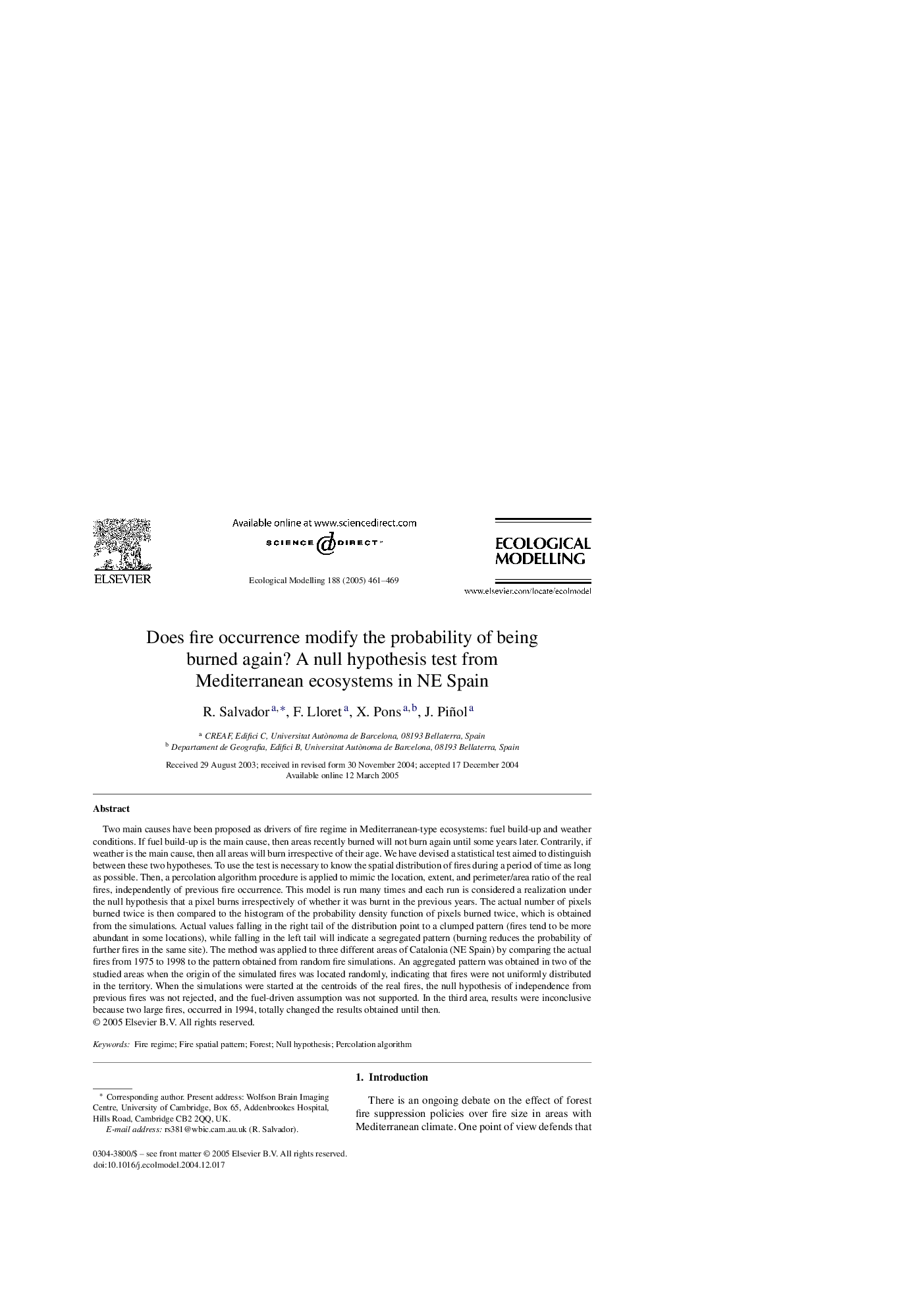| Article ID | Journal | Published Year | Pages | File Type |
|---|---|---|---|---|
| 9443529 | Ecological Modelling | 2005 | 9 Pages |
Abstract
Two main causes have been proposed as drivers of fire regime in Mediterranean-type ecosystems: fuel build-up and weather conditions. If fuel build-up is the main cause, then areas recently burned will not burn again until some years later. Contrarily, if weather is the main cause, then all areas will burn irrespective of their age. We have devised a statistical test aimed to distinguish between these two hypotheses. To use the test is necessary to know the spatial distribution of fires during a period of time as long as possible. Then, a percolation algorithm procedure is applied to mimic the location, extent, and perimeter/area ratio of the real fires, independently of previous fire occurrence. This model is run many times and each run is considered a realization under the null hypothesis that a pixel burns irrespectively of whether it was burnt in the previous years. The actual number of pixels burned twice is then compared to the histogram of the probability density function of pixels burned twice, which is obtained from the simulations. Actual values falling in the right tail of the distribution point to a clumped pattern (fires tend to be more abundant in some locations), while falling in the left tail will indicate a segregated pattern (burning reduces the probability of further fires in the same site). The method was applied to three different areas of Catalonia (NE Spain) by comparing the actual fires from 1975 to 1998 to the pattern obtained from random fire simulations. An aggregated pattern was obtained in two of the studied areas when the origin of the simulated fires was located randomly, indicating that fires were not uniformly distributed in the territory. When the simulations were started at the centroids of the real fires, the null hypothesis of independence from previous fires was not rejected, and the fuel-driven assumption was not supported. In the third area, results were inconclusive because two large fires, occurred in 1994, totally changed the results obtained until then.
Keywords
Related Topics
Life Sciences
Agricultural and Biological Sciences
Ecology, Evolution, Behavior and Systematics
Authors
R. Salvador, F. Lloret, X. Pons, J. Piñol,
